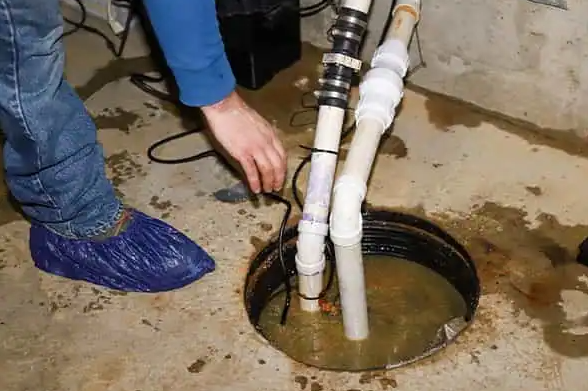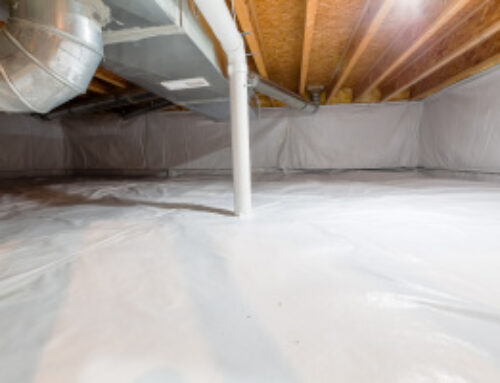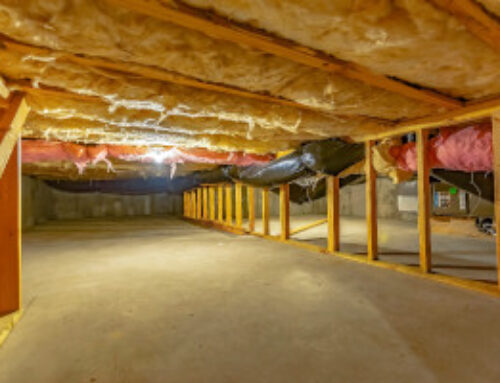Moisture is a significant problem for homeowners in Indiana. This is a bigger challenge when it comes to maintaining a crawlspace instead of a traditional slab or basement foundation.
Are sump pumps able to be installed in crawlspaces? In many cases, they are. Find out whether a sump pump is the best way to protect this part of your property against water damage.
What Is a Sump Pump? How Does It Work?

A sump pump is a water pump that helps you address flooding in or around your foundation. It’s common to find a sump pump in a basement where the confined space creates conditions ideal for flooding. The pump moves water from the basement and flushes it to an area outside the home.
Homeowners use sump pumps to prevent common foundation problems. Since water damages the home’s structure and erodes the foundation, it’s important to keep moisture exposure limited in this area. A sump pump offers the extra protection homeowners need to protect their properties.
The pump sits in a pit or hole in your basement or beneath your house. As water fills the pit, the rising level of water will trigger a switch and activate the pump.
The pump flushes the water through a discharge pipe. In turn, the pipe carries the water outside and releases it in a safe area.
Many sump pumps use electricity for power. This poses a problem since the heavy rainstorms that cause flooding can also lead to power outages. For this reason, it’s a good idea to get a sump pump with a backup battery. This will ensure the pump continues working even when you lose power.
Can Sump Pumps Be Installed in a Crawlspace?
Yes, it’s very common for homeowners to install sump pumps in their crawlspaces. Even this type of foundation can suffer damage from flooding, so it’s important to take steps to guard against excess water.
It might be easier to put a sump pump in your crawlspace than a basement. Most crawlspaces have unfinished floors. This means you won’t have to drill through concrete to excavate a pit for the pump.
An unfinished floor also makes it easier to install the discharge pipe. This can reduce the labor and costs involved in the installation process.
Why You Might Want a Sump Pump in Your Crawlspace
Are sump pumps able to be installed in crawlspaces to prevent weather-related foundation damage? Absolutely! The sump pump will activate automatically as soon as the water reaches a predetermined level. Even if you’re not home, the pump will work to protect your crawlspace.
In addition to protecting against direct water damage, the pump will offer long-term protection against mold growth. By removing excess water from beneath your home, mold is less likely to develop on your home’s foundation and structure.
In addition, the process minimizes the risk of some pest infestations. Some insects, such as mosquitoes, gather around standing water. By using a sump pump to remove water as soon as it starts to accumulate, you’ll eliminate the environment that attracts many pests.
The Installation Process for Crawlspace Sump Pumps
Are sump pumps able to be installed in crawlspaces without undertaking massive renovations? While there are several steps involved in the process, installing a sump pump in your crawlspace isn’t a disruptive process. The following step-by-step overview will prepare you for the installation.
1. Choose and Excavate the Sump Pump Site
Picking a spot to install the sump pump requires finding the lowest point in the crawlspace. This will ensure water flows toward the sump pump pit when there is flooding in your crawlspace.
The location should have a GFCI electrical outlet nearby. If there isn’t a GFCI outlet in your crawlspace, you may have to hire someone to install an outlet before the installation can proceed.
After preparing an appropriate location, the excavation can begin. Most sump pump basins are 24-36” deep. The installer should excavate a hole that’s 12” deeper than your basin.
2. Prepare and Install the Sump Basin
Before setting the basin in the excavated pit, the installer should drill three holes near the top of the basin. The holes promote proper drainage. Additionally, the installer will wrap the outside of the basin in landscape fabric to keep soil and debris from getting inside the basin.
Next, the installer will use soil to create a level surface inside the hole. Once the basin is positioned inside the pit, it should sit evenly.
3. Connect the Sump Pump
The installer will set the sump pump in the basin and plug the unit into the nearby GFCI outlet. Before connecting to the outlet, make sure the unit is off. You’ll want to avoid an unexpected start until you’re ready to test the device.
4. Install the Discharge Line
Connect a discharge PVC pipe to the sump pump and run the line to an area outside your crawlspace. You’ll want to make sure the line runs far enough to prevent water from flowing back into the crawlspace. Proper soil grading will help run the water away from the house.
The installer should connect a check valve to the discharge line. This is an important measure since the check valve prevents water from flowing in the wrong direction.
5. Backfill the Excavation Site
After connecting everything, the installer will fill the gaps between the excavation hole and the basin. The basin’s lip should stay level with the surrounding soil or concrete. Fill the gap with soil or use cement to create a more permanent seal.
6. Test the Sump Pump
Turn on the sump pump and pour five gallons of water into the basin. Five gallons should be enough to activate the pump and observe its operation. This process involves making sure the pump activates and pumps the water to the discharge line.
Look for signs of a leaking discharge line. Once all of the water gets flushed to the exit spout, you can complete the testing.
FAQs
Keep Your Crawlspace Nice and Dry With Help From Crossroads Foundation Repair
Indiana homeowners trust Crossroads Foundation Repair with all of their foundation needs because they know we deliver high-quality services. We can install a sump pump in your crawlspace and offer more basement waterproofing solutions for this important part of your home.
Request a free evaluation today!




